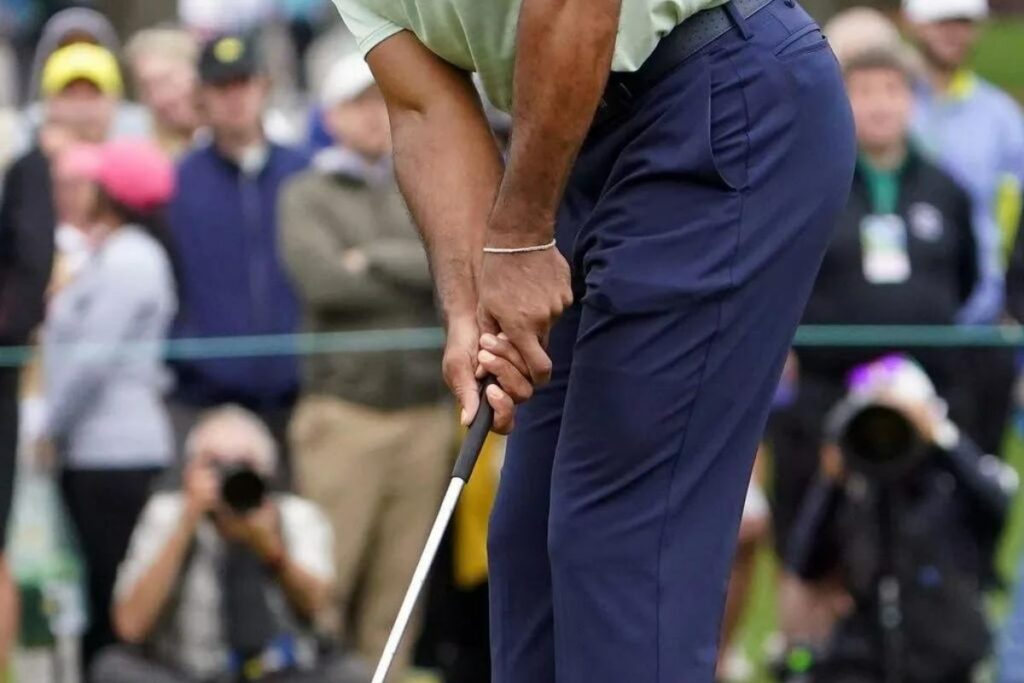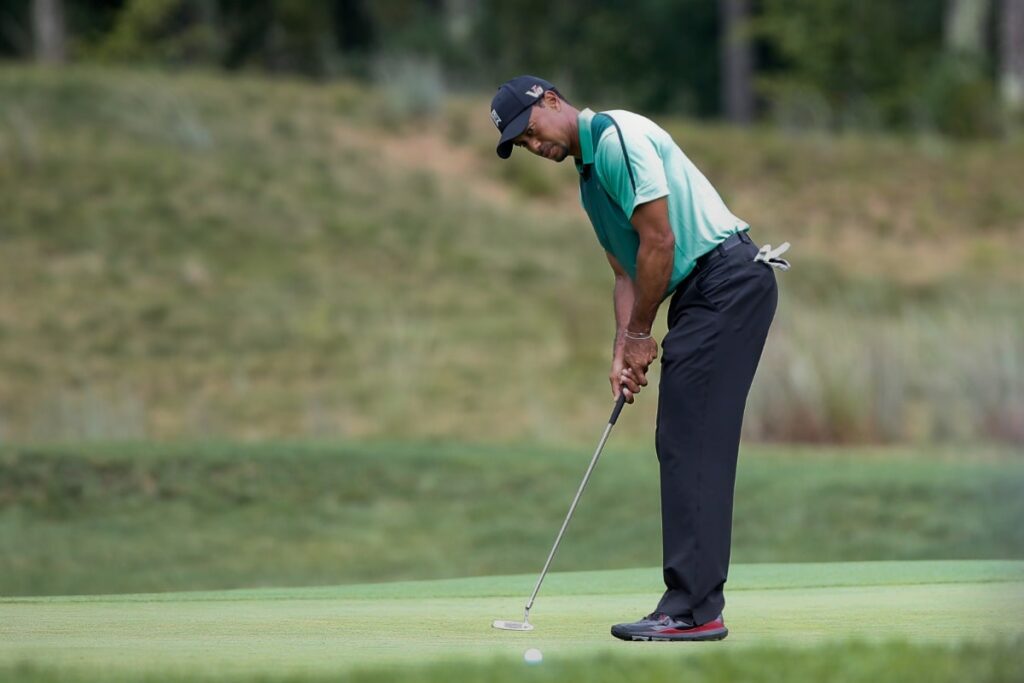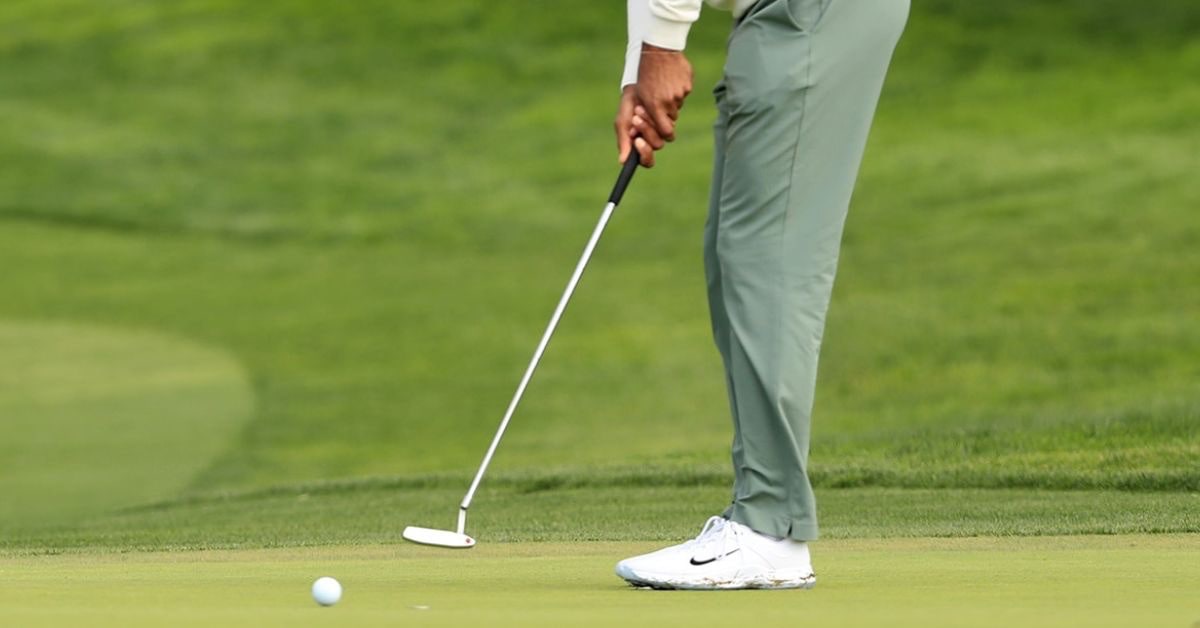Fundamentally, you can’t have a reliable putting stroke without a good grip.
A good putting grip helps in several ways. It helps you feel comfortable over the ball, gives you a stable putting stroke, and maximizes your chances of sinking putts.
In this article, you’ll learn everything about the reverse overlap putting grip.
It’s one of the most common putting grip techniques — used by over two-thirds of players on tour — including none other than Tiger Woods himself.
Ready to learn? Let’s go!
Reverse Overlap Putting Grip
The reverse overlap putting grip is a conventional grip that reverses the traditional overlap grip used by many golfers for a full swing. First, place your lower hand halfway down the putter grip. Then, position your upper hand above, overlapping the index finger across two fingers on the lower hand.
Essentially, the reverse overlap grip helps to keep the putter grip secured in each palm, allowing your hands to work together throughout the putting stroke.
Not only does this keep you comfortable over the ball, but it also prevents you from flicking your wrists through the stroke — improving consistency.
But, how exactly does the technique work? Read on to find out!

How Does the Reverse Overlap Work?
The reverse overlap grip is the most common technique used to hold the putter. In fact, it’s commonly referred to as the conventional putting grip in golf.
Essentially, it’s very similar to the traditional overlap grip used for full swings with other clubs — just reversed. So, instead of overlapping the right hand’s pinky on top of the left hand’s index finger, the left index finger overlaps the right pinky.
The reason for this is that it effectively locks the hands, so the action of the putting stroke comes from the shoulders rather than the wrists. Ultimately, this will lead to better consistency, and allow you to improve your distance control.
To do it, follow these three simple steps:
- First, place your right hand about halfway down the putter grip. This is the dominant hand in the stroke. Place your thumb on the front edge of the grip.
- Next, set your left hand above with the grip running through both palms. The middle finger of your left hand should rest up against your right hand’s pinky.
- Lastly, overlap the left index finger over your right pinky and ring fingers. This links the hands together, keeping you stable through the putting stroke.
PRO TIP: It’s important to feel very little tension at address, so relax your hold on the putter and don’t grip too hard!
While the technique is simple, it can feel unusual at first — particularly when you’ve been used to a different putting grip technique for many years.
However, you should allow yourself enough time to adapt to using it. Trial it for a few putts on the practice green over the course of a few days. If it starts to feel natural and you find yourself holing more putts, then you might’ve found your new grip!
Check out the video below, where Me And My Golf demonstrate the reverse overlap grip technique along with four other common alternatives including the claw putting grip:
Which Putter Style Does It Suit Best?
The reverse overlap grip technique is likely to work best with putters that have a toe hang, allowing for a slight release after impact.
So, this technique is best suited for golfers with an arc putting stroke.
It allows the hands to work together in unison, preventing the putter head from turning over too much while allowing for a slight arc release through the ball.
However, the reverse overlap grip is versatile and will work with most putter styles.
If you’re unsure which grip fits your putting stroke and style of putter best, consider testing out a few different variations on the practice green. For instance, other putting grips can be better suited to face-balanced putters, with a pendulum stroke.
Which Pros Use the Reverse Overlap Grip?
Most pros use the reverse overlap grip method. In fact, around 68% of the players on the professional tour use this technique for holding their putter.
As mentioned, the reverse overlap grip is used by Tiger Woods, most famously. And, while many golfers tend to change their technique through challenging spells on the greens, he’s stuck with it religiously throughout his entire career.
In addition to Tiger, other notable users of the reverse overlap grip are Rory McIlroy, Dustin Johnson, and Jason Day. Essentially, it’s the default grip on tour!

Conclusion
In summary, the reverse overlap putting grip is a conventional grip that encourages the hands to work together in unison, forming a stable putting stroke.
Above all, the main benefit of the reverse overlap is that it locks the hands, which allows the shoulders to rotate with minimal wrist movement. This improves consistency.
To try it, follow this three-step process:
- Place your right hand about halfway down the putter grip
- Set your left hand above with the grip running through both palms
- Overlap the left index finger over your right pinky and ring fingers
While the method works best with toe hang putters, it’s highly versatile and works with any putter style and stroke. Ultimately, it’s a reliable grip that has served millions.
Plus, Tiger uses it. If that’s not validation, then I don’t know what is!


